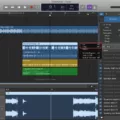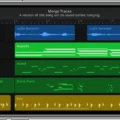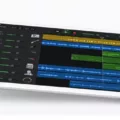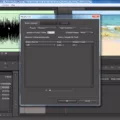The iPhone has become a popular choice for music enthusiasts, thanks to its sleek design and user-friendly interface. But have you ever wondered what types of audio files your iPhone can play? In this article, we will explore the different audio file formats that your iPhone supports, as well as how to transfer and manage these files on your device.
Out of the box, the iPhone is capable of playing several audio file formats. According to Apple’s specifications, the iPhone can play MP3, AAC, ALAC, WAV, and AIFF audio files. These formats cover a wide range of audio quality, from compressed MP3 files to lossless ALAC and AIFF files.
One popular audio format that the iPhone does not natively support is FLAC. However, you can still play FLAC files on your iPhone by using Apple’s Files app. Simply download the FLAC file onto your device and open it with the Files app. The app will automatically convert the FLAC file to a compatible format for playback on your iPhone.
Now that you know which audio file formats your iPhone can handle, let’s discuss how to transfer and manage these files on your device. There are a few different methods you can use to transfer audio files from your computer to your iPhone.
One way is to use iTunes, Apple’s media management software. Connect your iPhone to your computer using a USB cable and open iTunes. Click on the iPhone icon that appears in iTunes, then select the “Music” tab in the sidebar. Check the “Sync Music” box and choose the option to sync selected playlists, artists, albums, or genres. You can then select the audio files you want to transfer to your iPhone and click the “Apply” button to start the sync process.
Another method is to use cloud storage services such as iCloud Drive or Dropbox. Simply upload your audio files to the cloud storage service on your computer, then download the files onto your iPhone using the respective app. This method allows you to access your audio files from anywhere and easily transfer them to your iPhone.
Lastly, you can also use third-party apps designed for file transfer, such as AirDrop or File sharing apps. These apps allow you to wirelessly transfer audio files between your computer and iPhone, without the need for cables or cloud storage. Simply install the app on both devices, select the audio files you want to transfer, and follow the on-screen instructions to complete the transfer.
Once you have transferred your audio files to your iPhone, you can manage them using the built-in Files app. This app allows you to organize your files into folders, rename files, and delete unwanted files. You can also use the Files app to search for specific audio files, making it easy to find your favorite songs or podcasts.
The iPhone is capable of playing a variety of audio file formats, including MP3, AAC, ALAC, WAV, and AIFF. While it does not natively support FLAC files, you can still play them using Apple’s Files app. Transferring and managing audio files on your iPhone can be done through iTunes, cloud storage services, or third-party apps. With the right tools and methods, you can enjoy your favorite music and audio files on your iPhone wherever you go.
Where Are Audio Files Stored on iPhone?
On an iPhone, audio files are typically stored in the “Music” app or the “Files” app. The specific location depends on how the files were obtained or downloaded.
1. Music app: If you have purchased or downloaded audio files from iTunes or other music platforms, they will be stored in the Music app. To access them, open the Music app and go to the “Library” tab. From there, you can browse your music collection, including audio files.
2. Files app: If you have manually transferred audio files to your iPhone or downloaded them from sources other than the Music app, they may be stored in the Files app. This app acts as a file manager, allowing you to organize and access various types of files on your device. Open the Files app and navigate to the desired location, such as the “On My iPhone” or “iCloud Drive” sections. Look for folders or files with audio extensions like .mp3 or .wav.
It’s worth noting that some apps, such as voice recording or podcasting apps, may have their own designated folders for storing audio files. In such cases, you may need to check within the specific app to locate your audio files.
If you are unsure where a specific audio file is stored, you can use the built-in search function in both the Music and Files apps to find the file by name or extension.
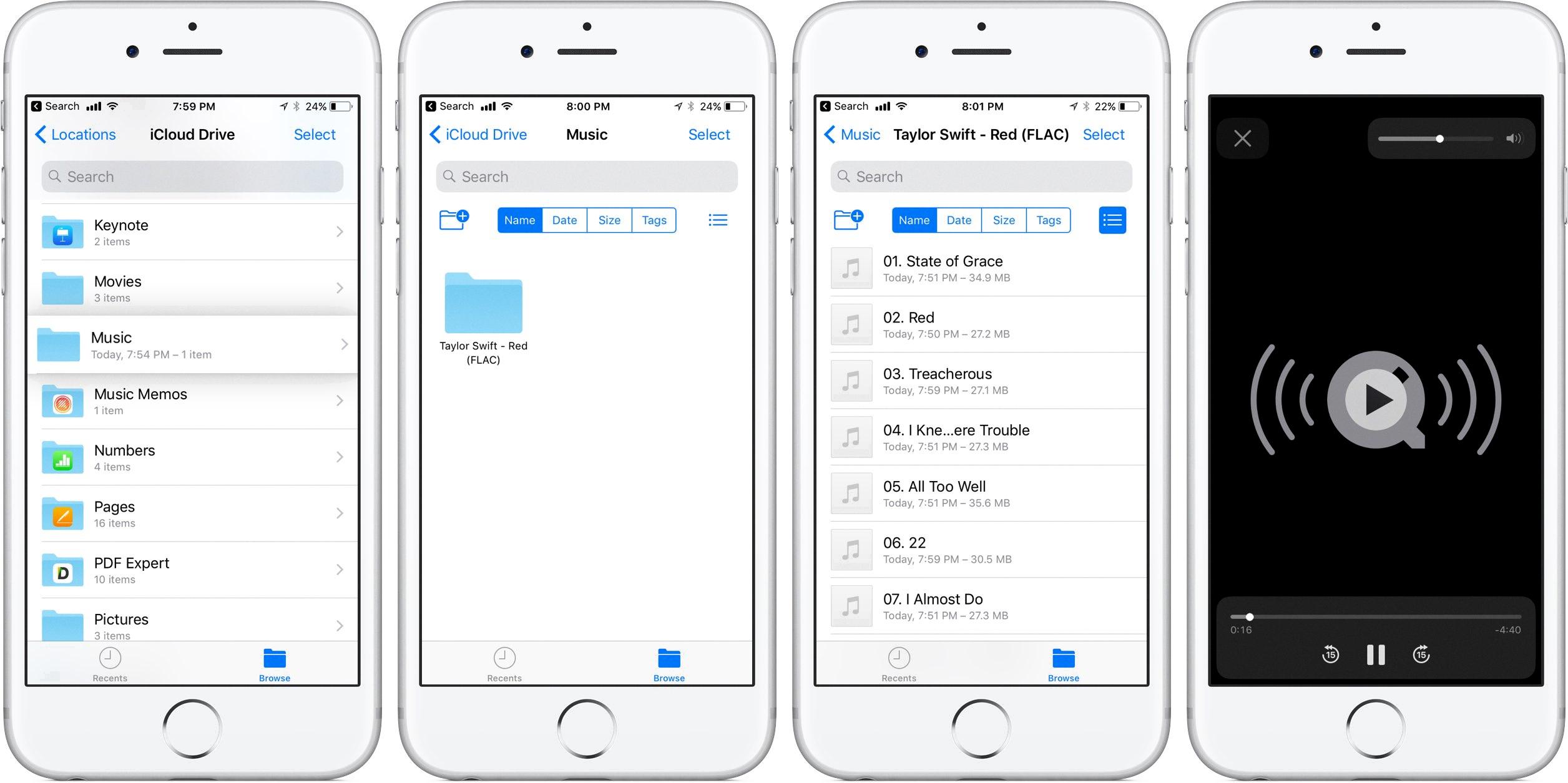
How Do You Put Audio Files on Your iPhone?
To transfer MP3 files from your laptop to your iPhone, follow these steps:
1. Connect your iPhone to your laptop using a USB cable.
2. Open the iTunes application on your laptop. If you don’t have iTunes installed, you can download it for free from the Apple website.
3. Once iTunes is open, you should see your iPhone icon appear in the top left corner of the iTunes window. Click on this icon to access your iPhone settings.
4. In the sidebar on the left side of the iTunes window, click on the “Music” tab.
5. In the main iTunes window, you will see various options for syncing music to your iPhone. Check the box next to “Sync Music” to enable music syncing.
6. You will then have the option to choose what music to sync to your iPhone. Select the “Selected playlists, artists, albums, and genres” option.
7. Scroll down to the “Playlists” section and check the box next to any playlists that you want to sync to your iPhone. You can also select specific artists, albums, or genres by checking the corresponding boxes.
8. If you want to manually manage your music, you can check the box next to “Manually manage music and videos.” This will allow you to drag and drop individual MP3 files directly onto your iPhone in iTunes.
9. Once you have selected the music you want to sync or have enabled manual management, click the “Apply” or “Sync” button in the bottom right corner of the iTunes window.
10. iTunes will then begin syncing the selected music to your iPhone. This process may take some time depending on the amount of music you are syncing.
Alternatively, you can also use third-party apps or cloud storage services like iCloud, Dropbox, or Google Drive to transfer MP3 files to your iPhone. These apps allow you to upload your MP3 files to the cloud and then download them onto your iPhone using their respective mobile apps.
Remember to make sure that the MP3 files you want to transfer are compatible with iTunes and your iPhone. iTunes supports various audio formats, including MP3, AAC, AIFF, WAV, and Apple Lossless. If your MP3 files are in a different format, you may need to convert them to a compatible format before transferring them to your iPhone. There are many free online file converters available that can help with this.
By following these steps, you should be able to easily transfer MP3 files from your laptop to your iPhone using iTunes.
Where Do MP3 Downloads Go on iPhone?
To locate MP3 downloads on your iPhone, follow these steps:
1. Open the Files app. If you don’t see the blue Files app icon on your Home Screen, swipe down from the center of the Home Screen and search for the Files app.
2. Tap on the “Browse” tab located at the bottom of the screen.
3. Look for and tap on “iCloud Drive” in the list of available locations.
4. Within iCloud Drive, you should find a folder named “Downloads.” Tap on this folder.
5. Once you are in the Downloads folder, you will see a list of your downloaded files, including any MP3 files you have downloaded.
By following these steps, you will be able to easily locate and access your MP3 downloads on your iPhone.
What Audio Files Can iPhone Read?
The iPhone has the capability to play a variety of audio file formats. Out of the box, the iPhone supports the following file types:
1. MP3: This is one of the most popular and widely used audio file formats. It offers good quality sound with a relatively small file size, making it ideal for storing and playing music on the iPhone.
2. AAC: Advanced Audio Coding (AAC) is the default audio format used by Apple in iTunes and on the iPhone. It offers high-quality sound with better compression than MP3, resulting in smaller file sizes without significant loss in audio quality.
3. ALAC: Apple Lossless Audio Codec (ALAC) is a lossless audio format developed by Apple. It provides CD-quality sound while compressing the audio data to reduce file size. ALAC files offer the same audio fidelity as uncompressed audio, but with smaller file sizes.
4. WAV: Waveform Audio File Format (WAV) is a standard audio format that provides uncompressed, high-quality audio. WAV files offer excellent sound reproduction but tend to have larger file sizes compared to compressed formats like MP3 or AAC.
5. AIFF: Audio Interchange File Format (AIFF) is another uncompressed audio format commonly used on Apple devices. It offers CD-quality sound and is widely supported by audio editing software. AIFF files are larger in size compared to compressed formats.
In addition to these formats, the iPhone also supports FLAC (Free Lossless Audio Codec) files, but only through the Apple Files app. FLAC is a lossless audio format that provides high audio quality while reducing file size. However, to play FLAC files on an iPhone, you would need to use the Files app or third-party apps that support FLAC playback.
It’s important to note that the availability of certain audio formats may also depend on the iOS version installed on the iPhone and the specific apps or software used for playback.
Conclusion
When it comes to audio files on an iPhone, there are a few key points to keep in mind. The iPhone supports a variety of audio file formats, including MP3, AAC, ALAC, WAV, AIFF, and even FLAC through Apple’s Files app. This means that you can enjoy a wide range of music files on your iPhone without any issues.
To transfer audio files from your laptop to your iPhone, you can use iTunes. Simply connect your iPhone to your laptop using a USB cable, open iTunes, and select the iPhone icon. From there, you can navigate to the “Music” tab and check the “Sync Music” box. You can then choose to sync selected playlists, artists, albums, or genres. This allows you to easily copy your desired audio files from your laptop to your iPhone.
If you’re looking for downloaded files on your iPhone, you can use the Files app. Simply open the app, tap on the “Browse” tab, and select iCloud Drive. From there, you can navigate to the Downloads folder to find your downloaded files.
The iPhone provides a seamless experience when it comes to audio files. Whether you’re listening to music or transferring files, the iPhone’s capabilities make it easy to enjoy your favorite audio content.






